NREL Water Power Newsletter, The Current, Spring 2023
Catch up on NREL water power news, prizes, tools, events, and researchers, including a wave-powered desalination device's ocean test and hydropower's role on the grid, a toolkit update, and an intern helping to bring tidal energy to a New England town.
This quarterly newsletter highlights the latest from NREL's Water Power Program.
In This Issue
Hydropower and Marine Energy News
Announcements
A HERO's Journey: NREL's Wave-Powered Desalination Device Returns to the Outer Banks
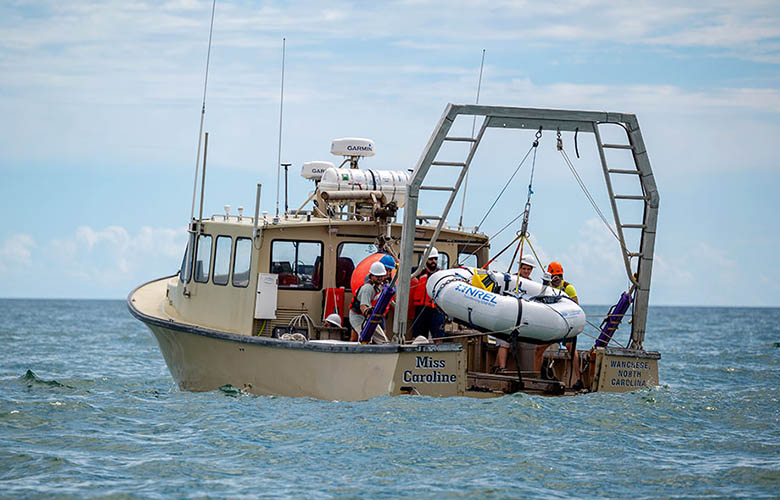
Last summer, National Renewable Energy Laboratory (NREL) researchers visited North Carolina's Outer Banks to deploy a wave-powered desalination device for a second in-water test. The hydraulic and electric reverse osmosis (HERO) wave energy converter (WEC) advances critical research on small-scale WECs, especially through publicly available data. Researchers will continue iterating on the HERO WEC design to make marine renewable energy technologies more reliable, resilient, and affordable. Systems such as the HERO WEC could provide solutions for communities that need access to both fresh water and reliable, clean energy. Watch the HERO WEC in action.
What To Watch
There's a (Marine Energy) Map for That
We're taking maps to a whole new level for marine energy. In partnership with Pacific Northwest National Laboratory and Sandia National Laboratories, NREL created the Marine Energy Atlas—a free, interactive mapping tool providing open-access, comprehensive data sets. Watch and learn what this resource can do for you.
Hydropower and Marine Energy News
Examining Hydropower's Role in a Changing Grid, Impact on Aquatic Environments
Researchers at NREL, Oak Ridge National Laboratory, and Pacific Northwest National Laboratory are working to understand the role of hydropower in a future U.S. power grid with increased wind energy and solar power. The results, published in Hydropower Operation in Future Power Grid With Various Renewable Power Integration in the journal Renewable Energy Focus, point to future hydropower costs and uses relying on water availability, which needs to be accurately understood to inform system operations.
In a related study, NREL and Oak Ridge National Laboratory researchers collaborated to analyze how developers can mitigate risks to aquatic communities while increasing hydropower use. Discover these findings in an August 2022 article published in Water Biology and Security, titled Shifts in Hydropower Operation To Balance Wind and Solar Will Modify Effects on Aquatic Biota.
NREL Was Sweet on Water Power for Valentine's Day
There's a lot to like about hydropower and marine energy—or a "watt" to love, if you asked NREL water power researchers on Valentine's Day. Dive into all the reasons to love water power, including the simple fact that water is necessary for life on Earth and can also provide power.
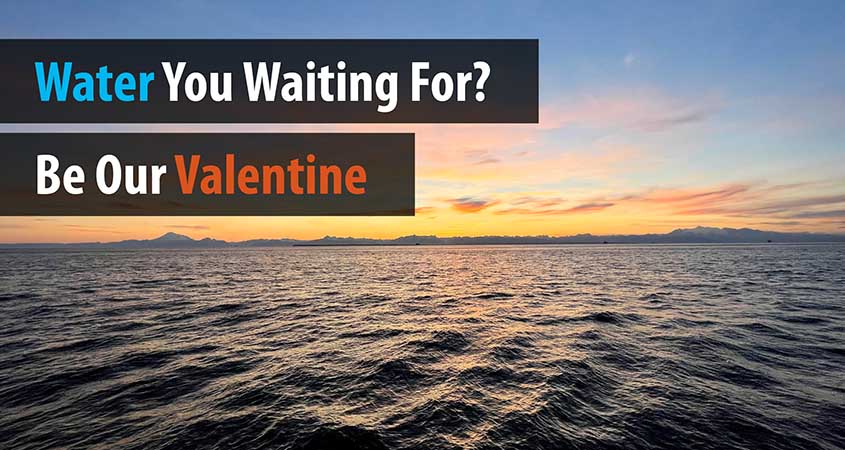
New Tool Helps Researchers Make the Most of Wave Power
WECs have the potential to power desalination systems that can provide drinking water in an emergency. WECs can also extend the life of hurricane-monitoring tools and meet the power needs of other off-grid applications. With support from the U.S. Department of Energy's Water Power Technologies Office (WPTO), the NREL research team collaborated to develop the Small WEC Analysis tool. This online, publicly available graphical user interface provides baseline information about the performance of different types of WECs in various ocean conditions. The tool is especially helpful for researchers, early developers, and potential funding agencies looking for a baseline measurement that indicates the amount of energy a particular WEC is expected to produce. Learn more about this first-of-its-kind database and what it could mean for advancements in WEC technology.
New NREL Study Breaks Materials Down—Literally
In the largest study of its kind, a research team rapidly aged over 300 material specimens to learn which could survive longest in marine energy technologies. The team recently published a summary report, which explains the multiyear study's methods and major findings, including which materials degraded more quickly than expected, why some strange phenomena will need further study, and how this effort could improve future materials testing. The multi-institutional team was led by Sandia National Laboratories with collaborators from Florida Atlantic University, Montana State University, NREL, and Pacific Northwest National Laboratory.
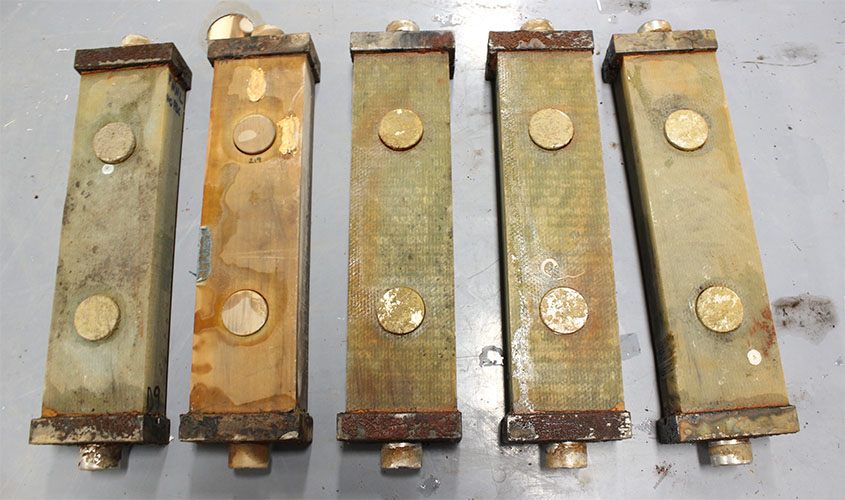
Dip Your Feet Into Marine Energy Metrics
The Portal and Repository for Information on Marine Renewable Energy has added a new tool to its box: Marine Energy Performance Metrics. Essential for developers, researchers, and regulators, this feature includes information about commonly used metrics to evaluate marine energy systems. The portal and repository is overseen by a multilab partnership among NREL, Sandia National Laboratories, and Pacific Northwest National Laboratory.
Marine and Hydrokinetic Toolkit Version 6 Now Available
NREL, Sandia National Laboratories, and Pacific Northwest National Laboratory recently released the sixth version of the Marine and Hydrokinetic Toolkit. Version 6 features a new module for combined oceanic and meteorological resource data analysis, analysis capabilities from acoustic doppler current profiler and acoustic doppler velocimeter data, and updated wave resource calculations adhering to International Electrotechnical Commission technical guidelines. The toolkit is an open-source knowledge hub that provides developers with the Python and MATLAB code needed to analyze how well marine energy technologies perform in ocean and river sites.
Our Most Popular and Powerful Water Power Moments From 2022
In 2022, NREL's water power team continued to make a splash in hydropower and marine energy research. From patenting new wave energy technologies to modeling the country's evolving power grid to include more hydropower, we're helping the United States achieve its goal of building a carbon-free future by 2035. Read the marine energy and hydropower year-end recap.
Prizes and Competitions
Inclusive Energy Innovation Summit Convenes Competitors and Stakeholders
The U.S. Department of Energy hosted an Inclusive Energy Innovation Prize summit in Washington, D.C., to discuss how to make clean energy funding and technologies more accessible to disadvantaged communities. The summit welcomed attendees from 18 teams competing in Phase 2 of the prize, along with industry leaders, NREL team members, and staff from the U.S. Department of Energy. Throughout the summit, attendees exchanged ideas and attended workshops to build an even stronger foundation for an equitable clean energy future.
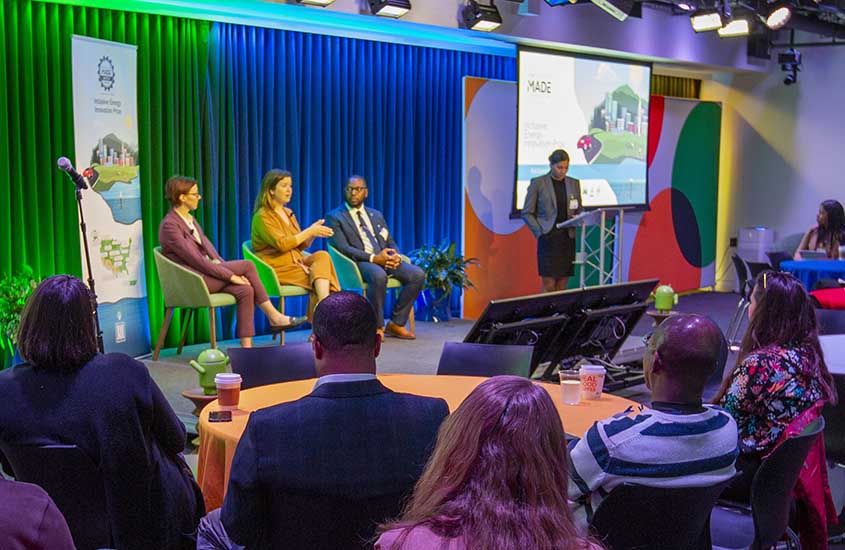
Winners of Phase 3 Hydropower Operations Optimization Prize Just Announced
In case you missed it, the U.S. Department of Energy announced the Hydropower Operations Optimizations Prize Phase 3 winners. Three teams were selected to receive a share of the $50,000 prize pool based on their novel solutions to advance hydropower’s contribution to the grid. The Hydropower Operations Optimizations Prize, which launched in April 2022, focuses on hydropower's complementary role in the renewable energy mix. The prize challenges competitors to use modeling, optimization, and machine learning to create new ways for hydropower systems to inform daily grid operations and meet water management needs, such as water supply, environmental flow requirements, and flood management.
Beneath the Surface—From Holes to Coal to Tides: Patrick O'Byrne's Journey to Clean Energy
Patrick O’Byrne, an NREL water power intern, was a serious child. Always busy. Always working on something, his parents would say.
“Working on what?” you might ask.
“Digging holes. Self-directed projects,” O’Byrne said, without even a hint of a smile.
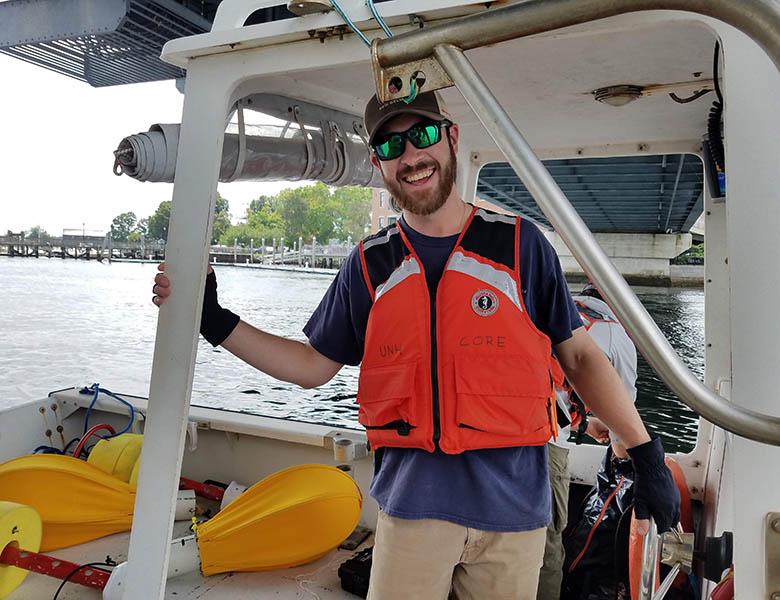
O'Byrne learned his industrious habits from a family of "worker bees." His grandfather, for example, fixed everything from the family television to the Ford Model T he owned his entire life. When O’Byrne recalls summer vacations on Massachusetts’ beachy Cape Cod, he does not mention sandcastles or boogie boards; he talks about discovering the ocean’s “wild natural systems,” as he calls them.
It is almost as if O’Byrne was born with his shirt sleeves rolled up, ready to work.
Now, fresh out of graduate school, O’Byrne is exactly what his parents expected him to be: an engineer, specializing in those wild ocean systems. With a master’s degree in ocean engineering from the University of New Hampshire, O’Byrne is helping hone tidal energy technologies, which, like submerged wind turbines, spin in rushing currents to generate clean, renewable electricity.
The field fits. O’Byrne not only gets to work on intricate underwater engineering challenges but is also helping solve one of the most serious and complex problems facing the world today: climate change.
Read more about O'Byrne's path to tidal energy and what other renewable energy careers he's eyeing for his future.
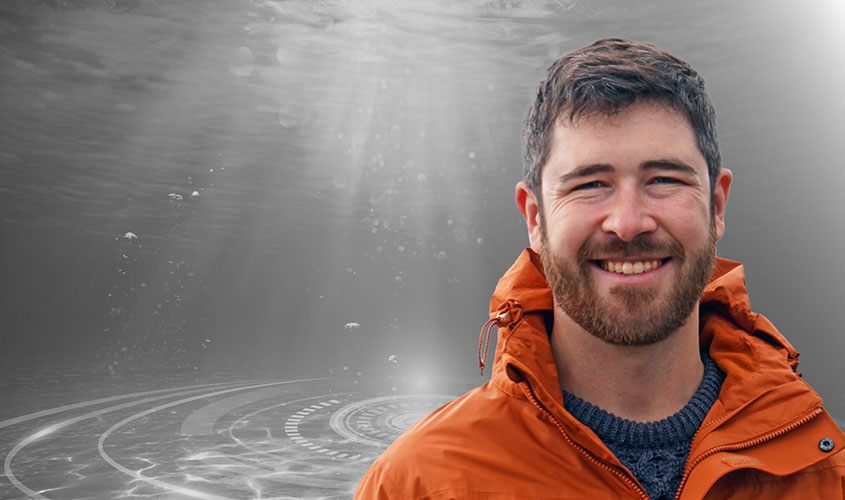
Events and Opportunities
Visit the NREL Events page for more event information and registration details on upcoming workshops.
R&D Deep Dive: Shaping the Future of the Marine Energy Atlas
April 6, 2023, 11 a.m.–12 p.m. MT, Virtual
This interactive deep dive, hosted by WPTO, will include a live demonstration of the Marine Energy Atlas and a discussion of what data and features should be added or changed to this open-access tool. Attendee feedback will directly shape future iterations of the atlas.
Marine Energy Career Panel Webinar
April 10, 2023, 3–4:30 p.m. PT, Online
Are you interested in working to build a clean energy future? Pacific Northwest National Laboratory and NREL invite you to join an informational webinar featuring national laboratory staff working to advance the marine energy industry. Staff across research disciplines will discuss their marine energy careers (past, present, and future), including their background, education, career path, and current projects. In addition, topics including mentorship, networking, and interpersonal communication skills will be addressed to extend advice to students who are preparing to graduate or enter into internship experiences or the marine energy workforce.
Energy Transitions Initiative Partnership Project Community Technical Assistance Webinar
April 11, 2023, 1–2 p.m. MT, Virtual
Attend an informational webinar on April 11, 2023, hosted by NREL to learn how the lab partners with the U.S. Department of Energy's Energy Transitions Initiative Partnership Project to help remote and island communities transform their energy systems and increase energy resilience. Apply for the community technical assistance before 11:59 p.m. MT on May 19, 2023. Learn what the assistance includes, who is eligible, and how to apply.
Waterpower Week
May 8–10, 2023, Washington, D.C.
NREL researchers will share their water power expertise at Waterpower Week during a 3-day, co-located conference held in Washington, D.C., May 8–10, 2023. Join hydropower project owners and developers, service and product suppliers, congressional policymakers, government agency officials, members of nongovernment organizations, tribal representatives, and other stakeholders for intensive sessions covering all aspects of waterpower's role in the clean energy future. Hear from and connect with others who affect the industry, including regulators, resource agencies, and river and environmental communities.
Marine Energy Collegiate Competition and Hydropower Collegiate Competition Final Events at Waterpower Week
May 7–9, 2023, Washington, D.C.
The 2023 Marine Energy Collegiate Competition and Hydropower Collegiate Competition final event will be co-located at the National Hydropower Association’s Waterpower Week in Washington, D.C., in May 2023. Both competitions engage graduate and undergraduate students to address complex challenges to our clean energy future. Join the U.S. Department of Energy's WPTO, NREL, and the Hydropower Foundation to network with undergraduate and graduate students, meet with potential new hires, and learn how the next generation is helping us reach a clean energy future.
Proposals for Clean Energy to Communities In-Depth Partnerships
May 17, 2023
The U.S. Department of Energy's Clean Energy to Communities program is seeking four to five communities for in-depth technical partnerships that will help them address challenges to achieving their clean ambitions. NREL and other national labs will help selected communities plan secure, reliable, resilient, and affordable energy systems that align with their local and regional priorities. Learn more about the program, requirements, and key dates. Proposals are due May 17, 2023.
NREL in the News
U.S. Pokes the Sleeping Giant of Ocean Wave Energy, CleanTechnica (Feb. 22, 2023)
Technologies Offer Increasing Array of Long Duration Energy Storage Options, American Public Power Association (Feb. 7, 2023)
Winners of Hydropower Operations Optimization Prize announced, International Water Power & Dam Construction (Jan. 12, 2023)
UNC Charlotte: Where Applied Energy and Electromechanical Engineering Find Career Success, Study International (Jan 18, 2023)
Five Energy Storage Technologies You Should Be Watching, Power Engineering International (Jan. 20, 2023)
Can West Coast Waves Help Power State Energy Grids? Ocean Energy Could Take Its Place Alongside Solar and Wind in Helping To Decarbonize the Power Grid. A Key Test Is Coming Soon, The Orange County Register (Dec. 27, 2022)
Publications
See all the latest publications, or explore these featured publications.
Hydropower
Hydropower Cybersecurity Value-at-Risk Framework, NREL Technical Report (2023)
Marine Energy
Subcomponent Validation of Composite Joints for the Marine Energy Advanced Materials Project, NREL Technical Report (2023)
Deployment Readiness Framework Subtask 1.1 Literature Review, Pacific Northwest National Laboratory Technical Report (2023)
Toward the Instrumentation and Data Acquisition of a Tidal Turbine in Real Site Conditions, Energies (2023)
Review of WEC-Sim Development and Applications, International Marine Energy Journal (2022)
Impact of Large-Scale Effects on Mass Transfer and Concentration Polarization in Reverse Osmosis Membrane Systems, Separation and Purification Technology (2022)
Want More?
Subscribe to The Current to get the next water power newsletter in your inbox.
For the latest from WPTO, sign up for its water power newsletters. Have a more general question or can’t find what you’re looking for? Send us an email at water.power@nrel.gov.
Share

